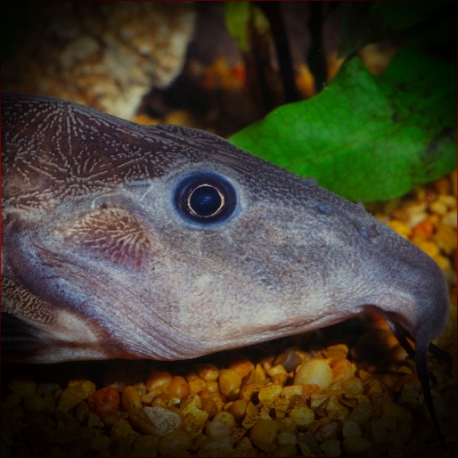More info
Datasheet
| Minimum Tank Size | 1700 litres / 449.09 US gallons |
| Maximum Size | 90.0cm / 35.43inches |
| Temperature | 21°C / 69.80°F - 26°C / 78.80°F |
| Hardness | 0-20ºdH |
| pH | 6.0-7.0 |
General Description
Previously known as Pseudodoras niger, the Ripsaw Catfish, scientifically classified as Oxydoras Niger, is a visually striking species suitable mostly for public aquaria due to its substantial adult size. Despite its intimidating name derived from its lateral spines, this fish is surprisingly peaceful and increasingly available in the aquarium trade, although it is recommended for experienced fishkeepers due to its demanding care requirements.
Aquarium Setup
When setting up the aquarium for Ripsaw Catfish, it is crucial to provide ample hiding spots with rockwork, roots, and bogwood. While the addition of plants is possible, ensuring adequate swimming space is essential. A tank capacity of at least 1700 litres is required, along with efficient filtration to maintain optimal water quality. Dim lighting can help encourage the fish to explore open spaces (see table for water conditions).
Behaviour
The Ripsaw Catfish is considered a gentle giant in the aquarium community, making it suitable to cohabit with other large, peaceful species like arowana, large characins such as pacu and silver dollars. However, caution should be exercised as they may consume smaller fish that fit into their mouths.
Feeding and Diet
Being omnivorous detrivores, Ripsaw Catfish in the wild feeds on a variety of edible items found in the substrate, including benthic crustaceans and larval forms of insects. In captivity, they readily accept most aquarium foods, but it is crucial to include vegetable matter and live or frozen foods in their diet regularly.
Reproduction & Dimorphism
Reproduction of the Ripsaw Catfish has not been achieved in captivity, and there is limited information available on sexual dimorphism of this species.
Habitat and Distribution
Typically found in Amazonian river biotopes, the Ripsaw Catfish inhabits various major river systems in northern South America, including regions in Ecuador, Colombia, Venezuela, Guyana, Peru, Bolivia, and Brazil. Its presence has been recorded in the Rio São Francisco and Rio Essequibo basins, while it is also believed to reside in the Rio Orinoco.

